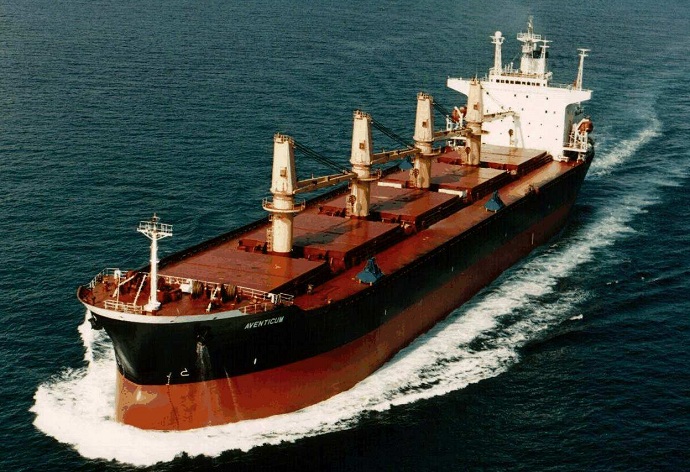There were numerous risks in operating seagoing bulk ships. The safety of sea-going bulk carriers is a matter of meticulous preparation. This site will provide an immediate guideline to the global shipping community as well as information on loading and discharging different bulk cargo types. It is essential to stay within the limitations set out by the classification agency. It is essential to reduce the chance of stressing ship's structures and comply with all safety guidelines to ensure the safety of sea travel. You might find useful information on bulk carrier topics in our detail pages, both for those working on the sea as well as those working ashore.
General features of seagoing bulk carriers
Bulk carriers are single-deck vessels equipped with top-side tanks and side tanks for hoppers within cargo spaces . They are designed primarily to carry single-commodity solid bulk cargo. Any substance that is not liquid or gas but bulk solid cargo, which includes any material made up of mixture or granules, or any other material with an uniform composition. The material is able to be loaded directly into the cargo compartment of a ship and does not require any containment. Dry cargo includes bulk grains, sugar, and even minerals. Bulk carrier, when understood in its broadest sense can refer to any vessel that are primarily designed to carry bulk cargo such as liquid cargo or solid cargo. Tankers are also included. The term is used primarily for vessels that carry bulk goods that are solid. This includes grains and similar agricultural products. Have a look at this bulk ship site for more.

What Exactly Is A Bulk Carrier What Are The Major Characteristics Of Bulk Carriers:
"A ship which is intended primarily to carry dry cargo in bulk, including such types as ore carriers and combination carriers"
-Carrying weights range from 3,000 tonnes up to 300,000.
The average speed is 12-15 knots
-Single deck ships, ie no tweendecks
Carriers with medium to small size bulk (carrying capacities between 40 to 60,000 tonnes) typically come with equipment for handling cargo. However larger vessels can make use of docks to load and unload.
-Cargo hold dimensions are generally big without obstructions. They also come with larger hatches that permit easy loading and unloading.
The ballast holds are a typical feature of bulk carriers. This can be used for ballast voyages to increase stability. One or two further holds could be allowed to ballast partially, but only when in port.
They are single pull, stacking or hydraulic type steel hatch covers.
There are four kinds and sizes of ballast tanks:
Sloping topside wing tanks
Bottom side of wings that are sloping
Double bottom tanks
Peak and post peak ballast water tanks
Bulk solid cargo? Any other than liquid or gas material that is composed of a mixture of particles and granules. It is able to be loaded directly into cargo areas without any intermediary storage. You must ensure that all cargoes are ready for loading, regardless of whether they're "clean" or "dirty" and there isn't any contamination. In order to load the cargo, it is important to wash the area thoroughly. A surveyor might be required to ensure that the space is ready to load. It is vital that the residues of a previous cargo be removed to ensure that contamination does not occur. The bulk cargo is the most susceptible to being damaged by water. This implies that the hold need to be dry to allow cargo to enter. In addition the hatch covers should be waterproof and sealed when required to stop water from entering. All fittings within the container (ladders, pipe guards as well as bilge.) are to be examined. All fittings in the hold (pipe guards, bilge covers.) are to be examined to ensure that they are in proper condition and securely fastened. These pieces of equipment can be a cause of damages to conveyor belts, which can create delays. The ship may be held accountable if the conveyor belts are accidentally discharged with cargo. Check out this dry bulk vessels url for more.

Bulk Carrier or Bulker? It is built to transport dry cargo. A typical bulk carrier has one deck, a one skin, and a double bottom. It also has topside tanks and cargo space tanks. Bulk carriers are designed to load the maximum deadweight for any type of bulk cargo from heavy ore to lighter grain . It isn't easy to move, load and disperse dry bulk cargo.
Gearless Bulk Carrier
Many bulk cargoes may have dangerous properties or be subject to changes during transportation. The ship could be damaged by improper loading e.g. There is a possibility for the ship to bow when it is not properly loaded. This is called stress? It can result in serious implications for life at sea in extreme weather conditions. The remaining cargoes may be affected by residues from other cargoes. Certain bulk cargoes may be affected by water damage, e.g. cement power. It's not easy to determine the true quantity or weight of cargoes being discharged or loaded. All these factors affect the procedures for the safe carriage of bulk cargoes. Discharging bulk cargo using? Bulk cargoes tend to form a cone when they are loaded on conveyor belts. The angle formed by the cone is referred to as the 'angle of repose'. It is different between cargos. Iron ore cargoes, for example, will create an cone with an angle. Cargoes that are free to move around freely will result in an angle-shaped cone that has a low angle. A cargo with low angles or repose may shift during the course of. As the cargo nears the point of completion, bulldozers might need been used to divide the load across holds. Dry-bulk carriers rely on shoreside facilities for loading and discharging cargo, but bulk carriers can also self-unload using cranes or conveyors on deck.
